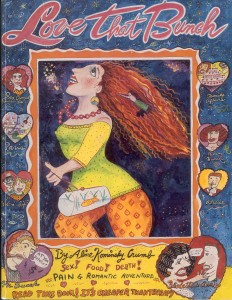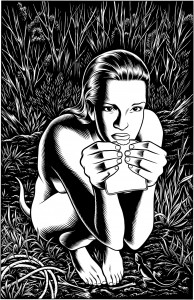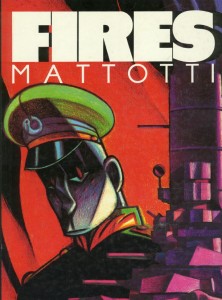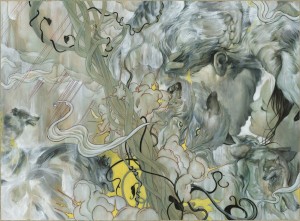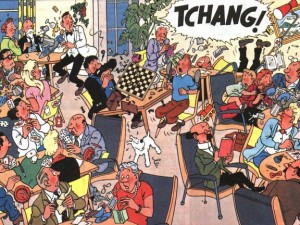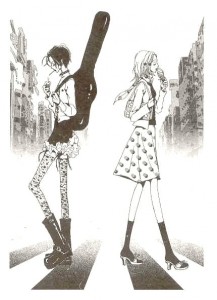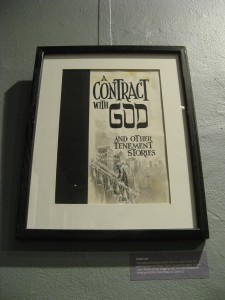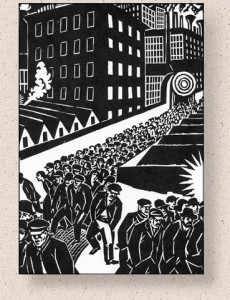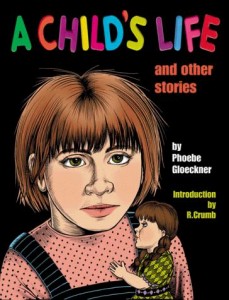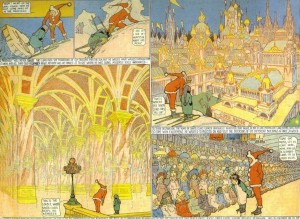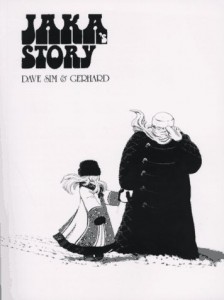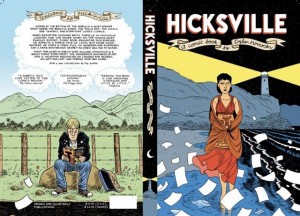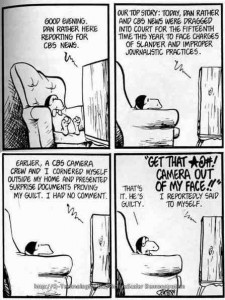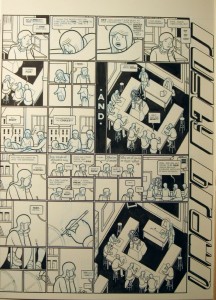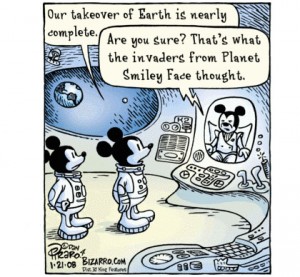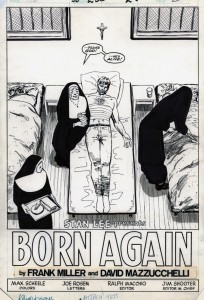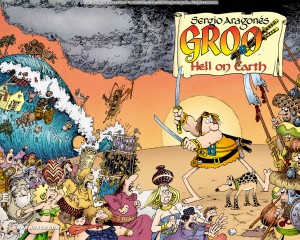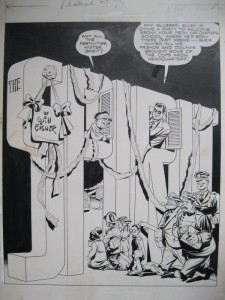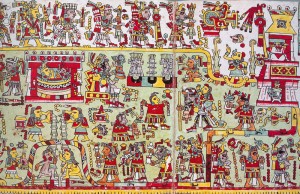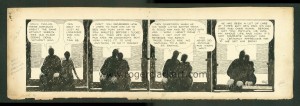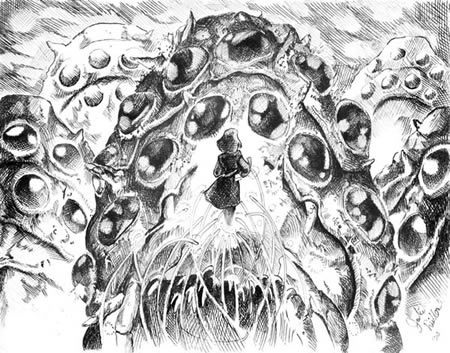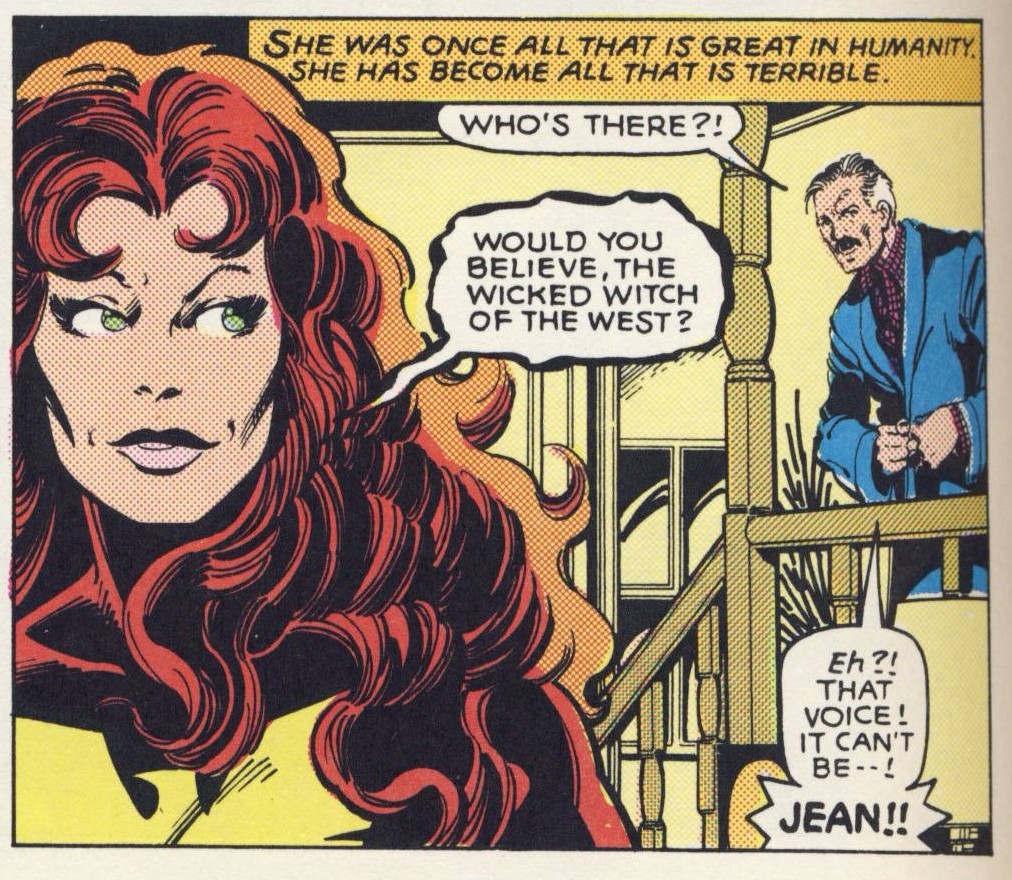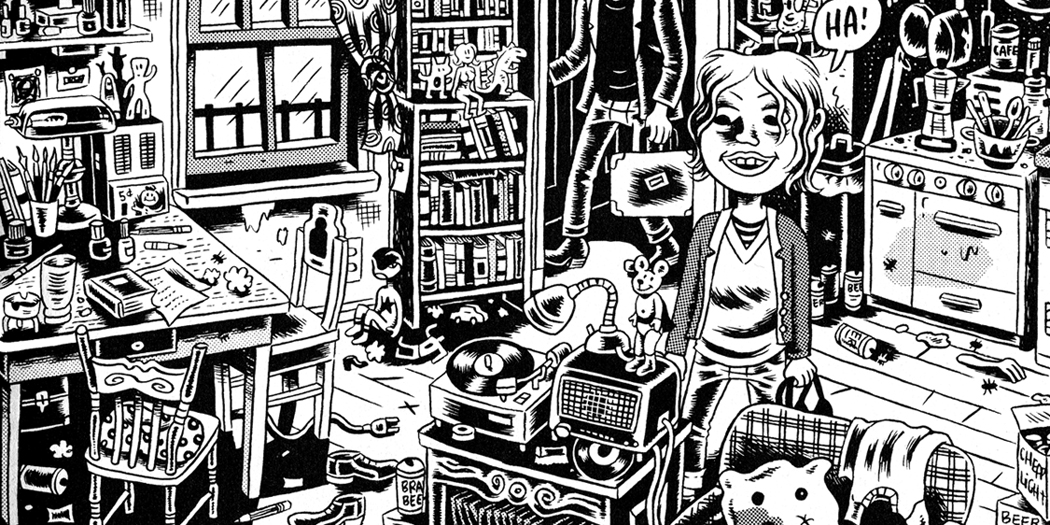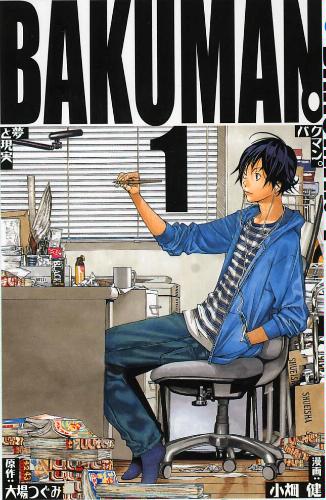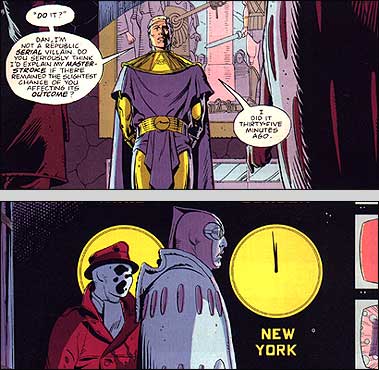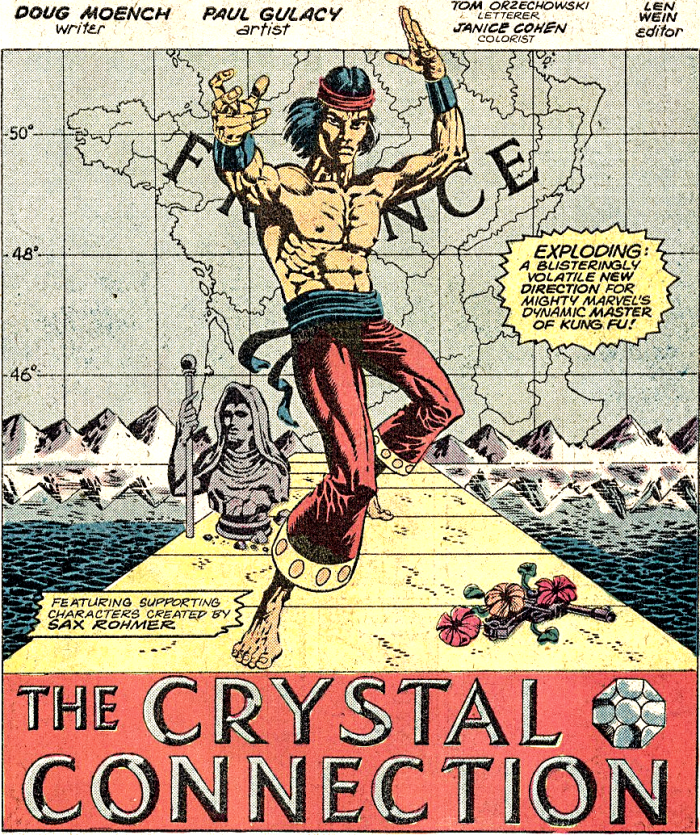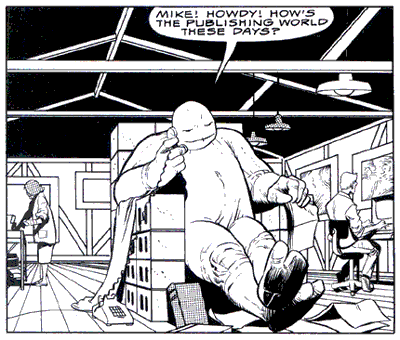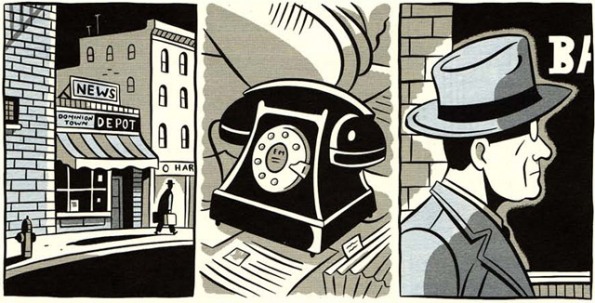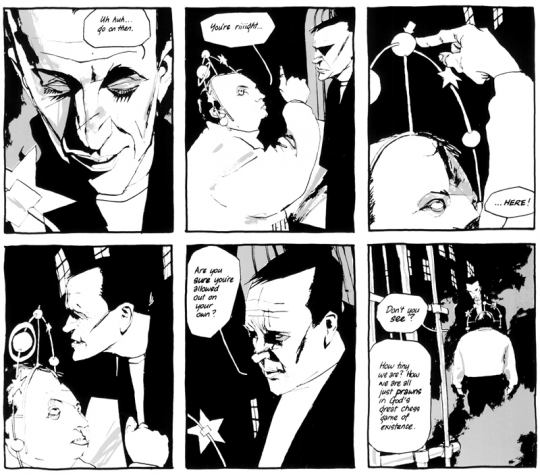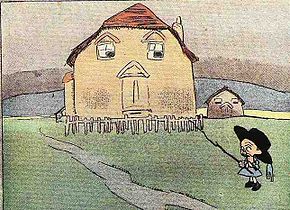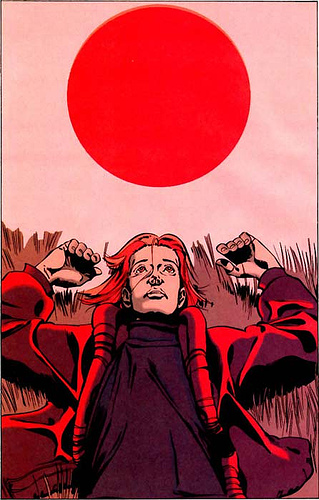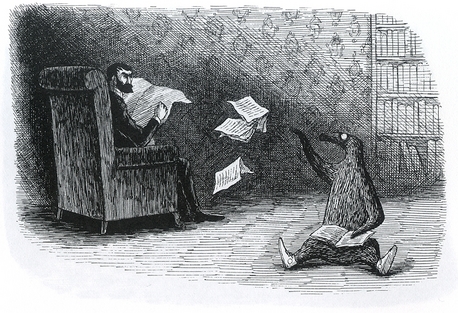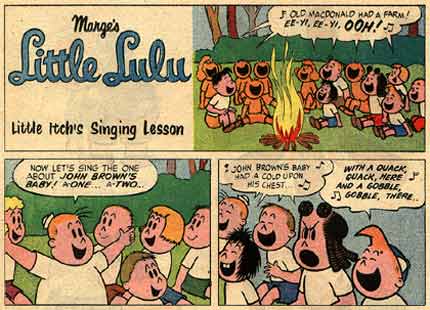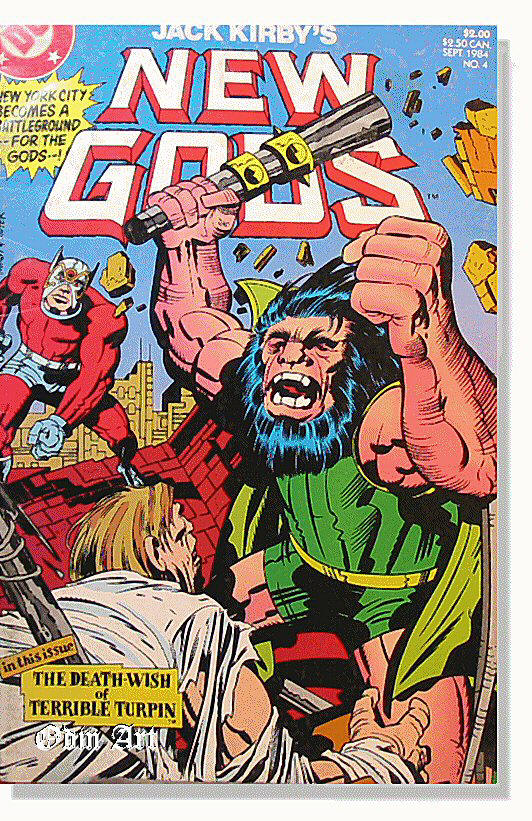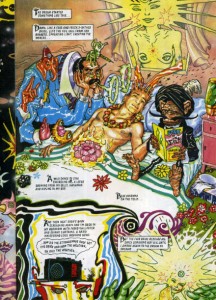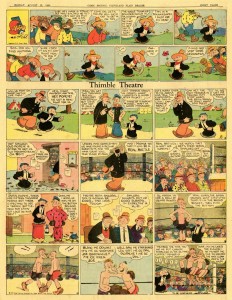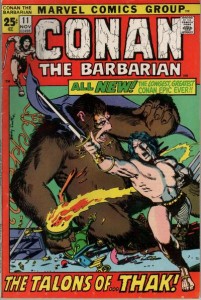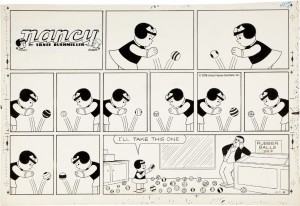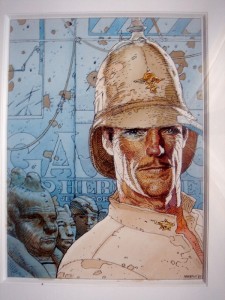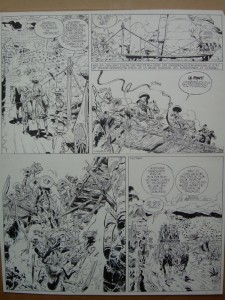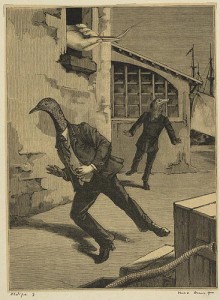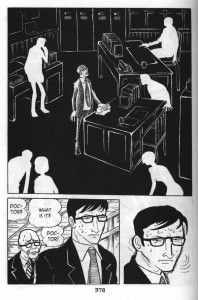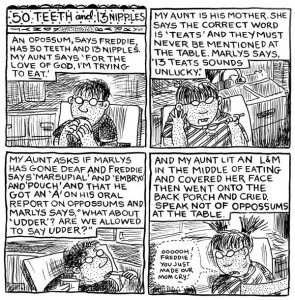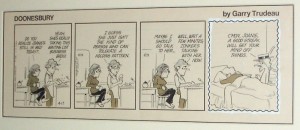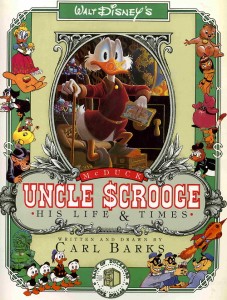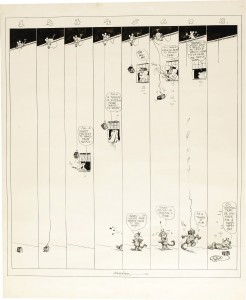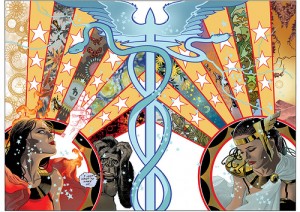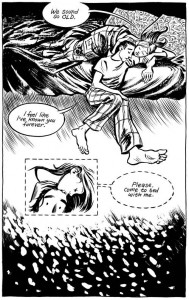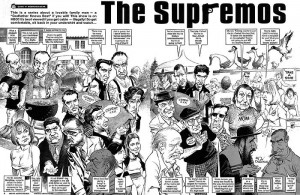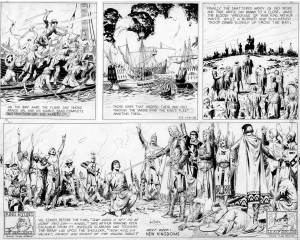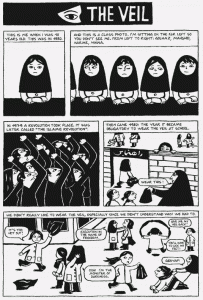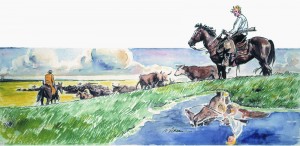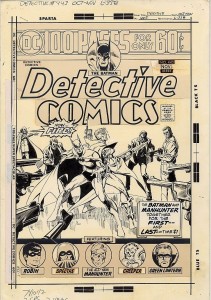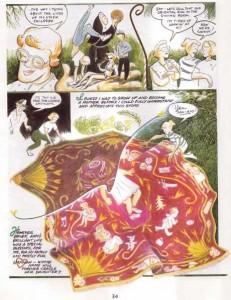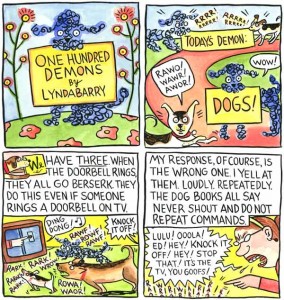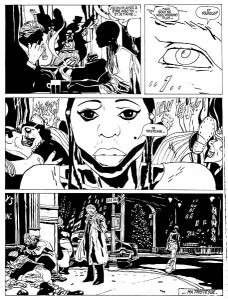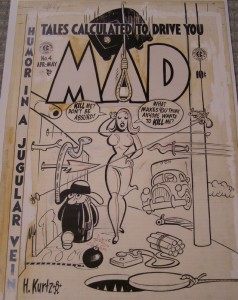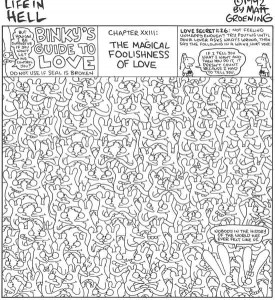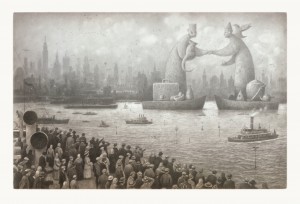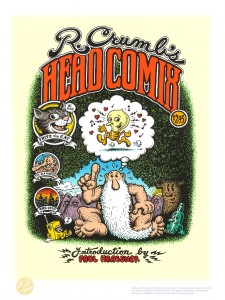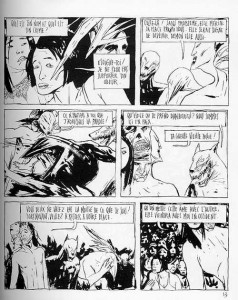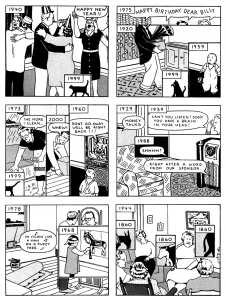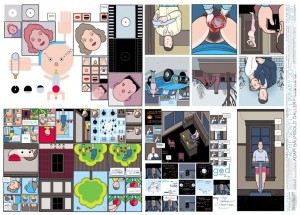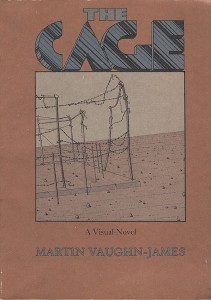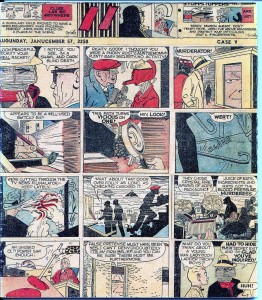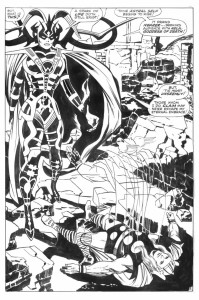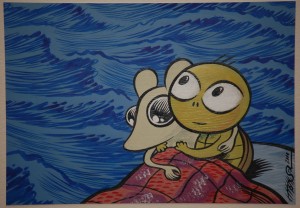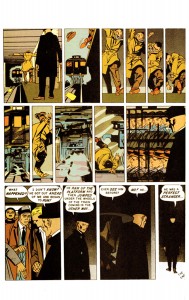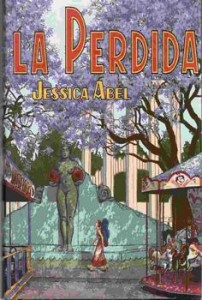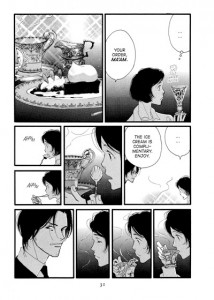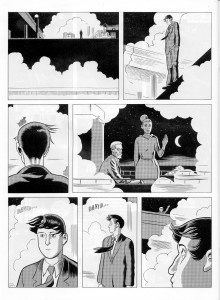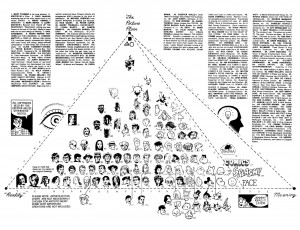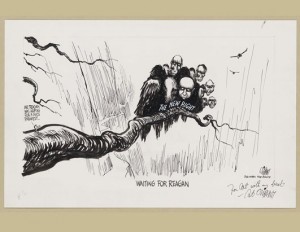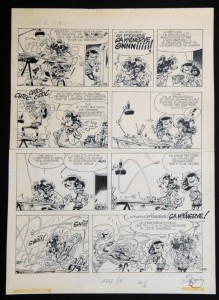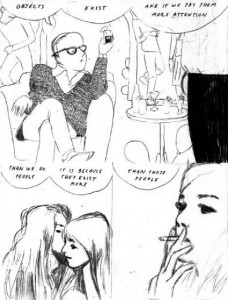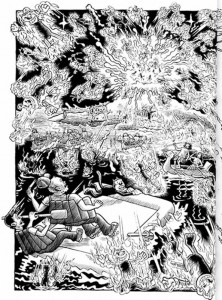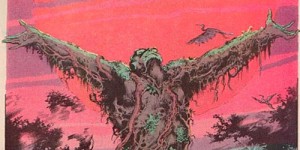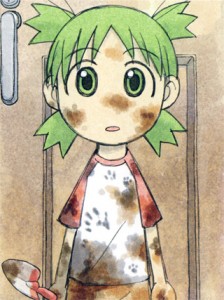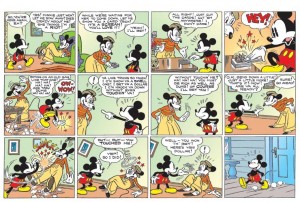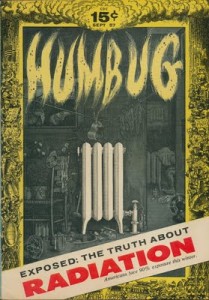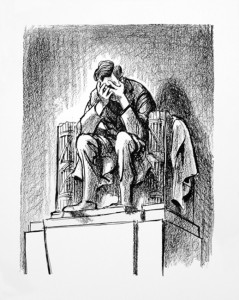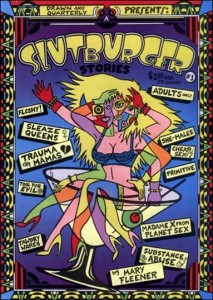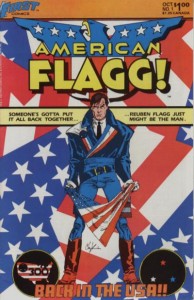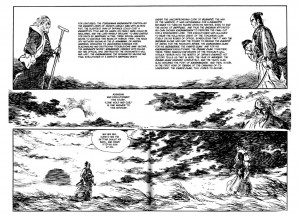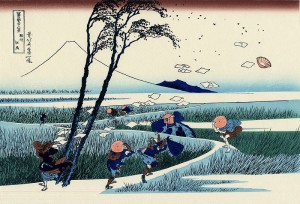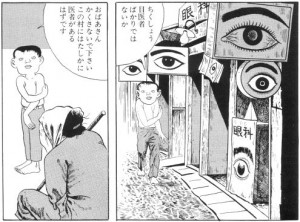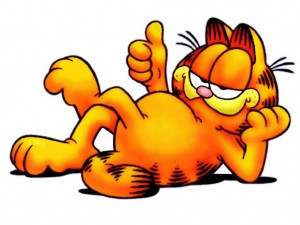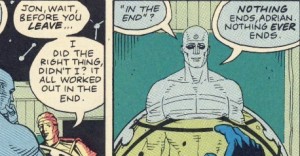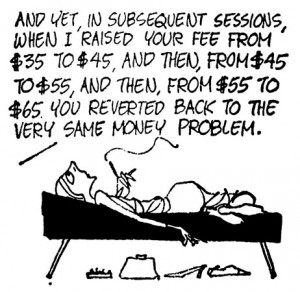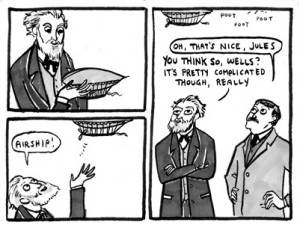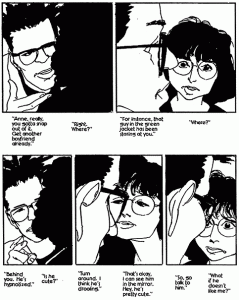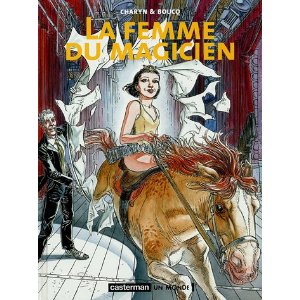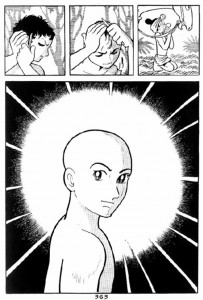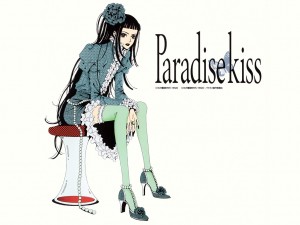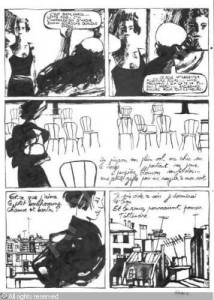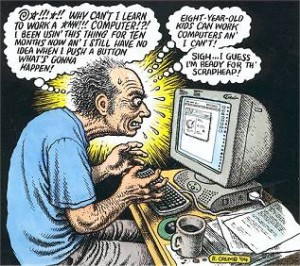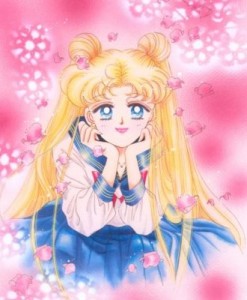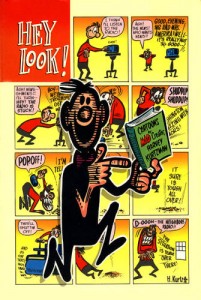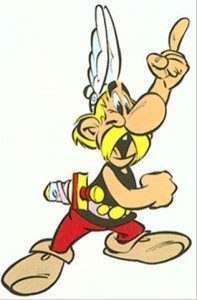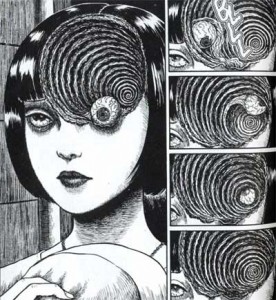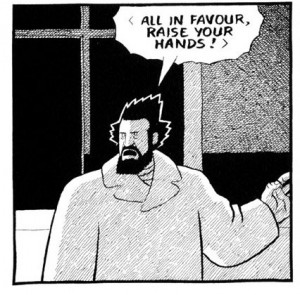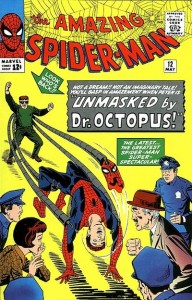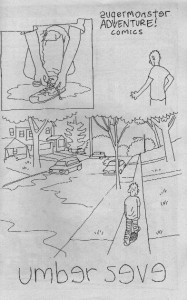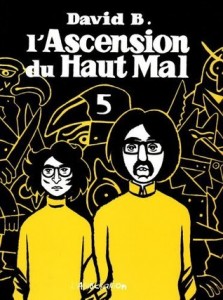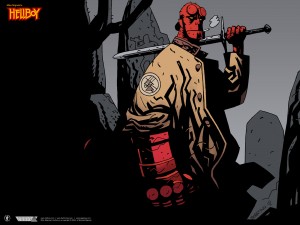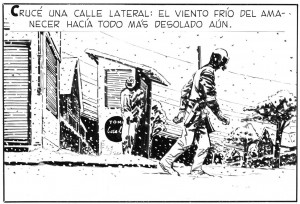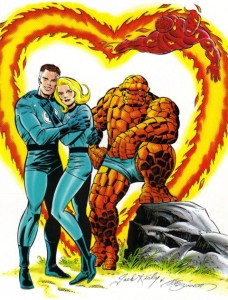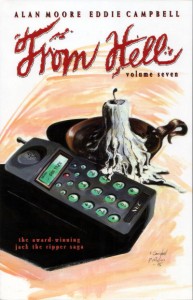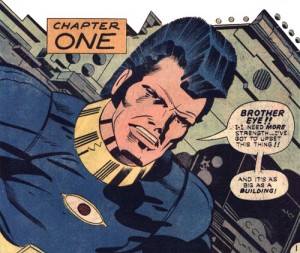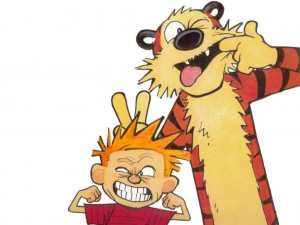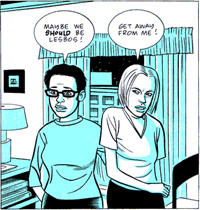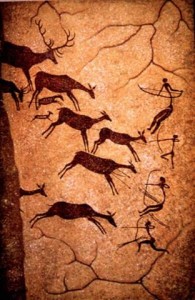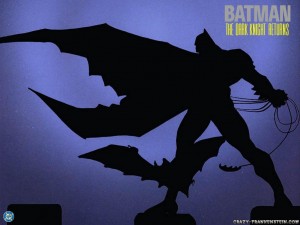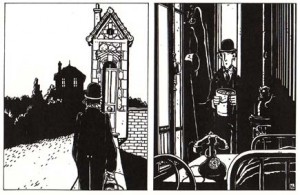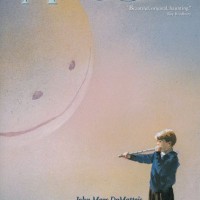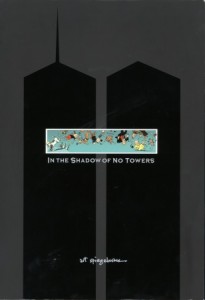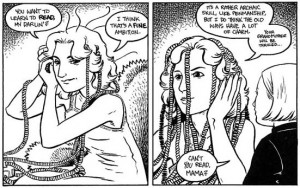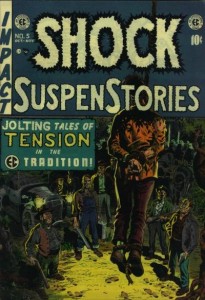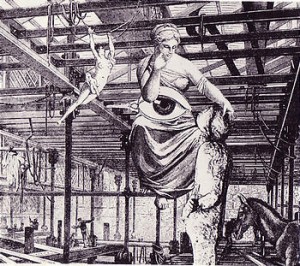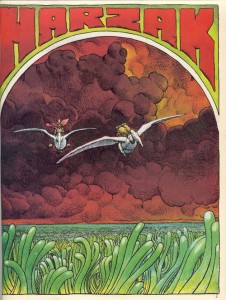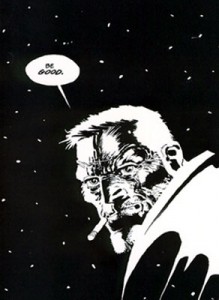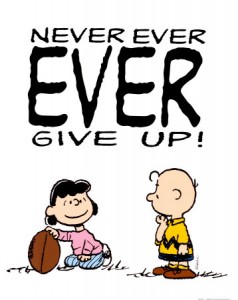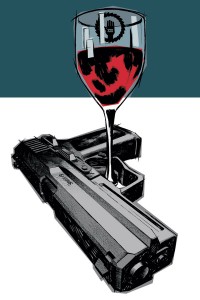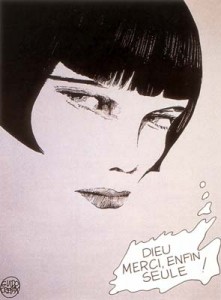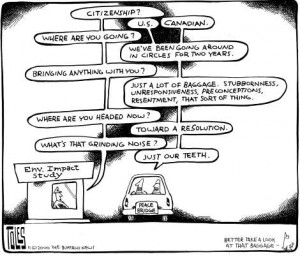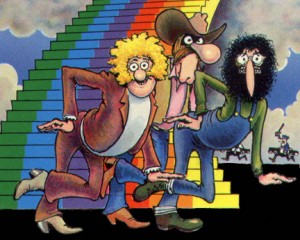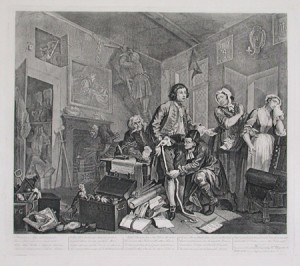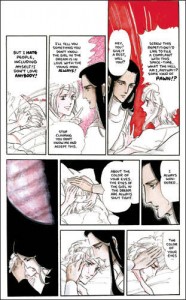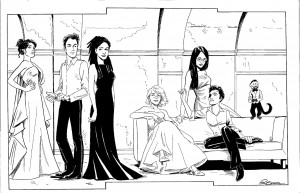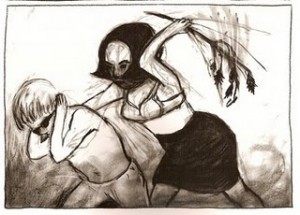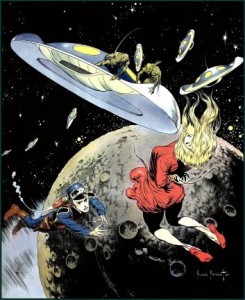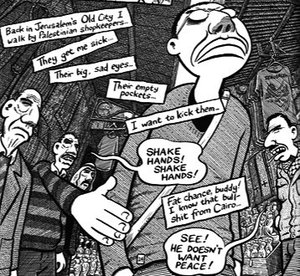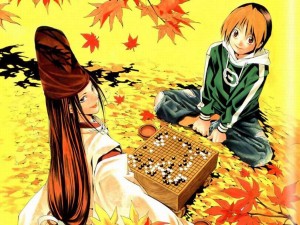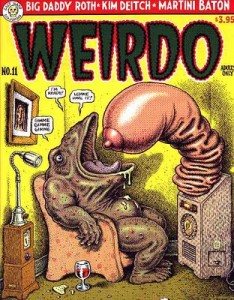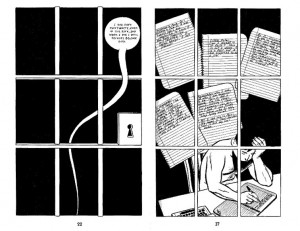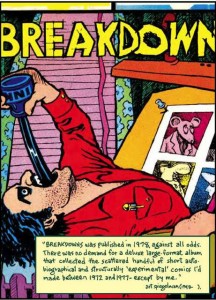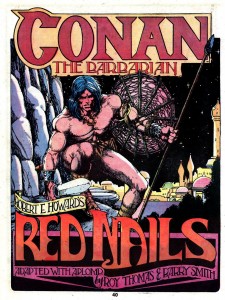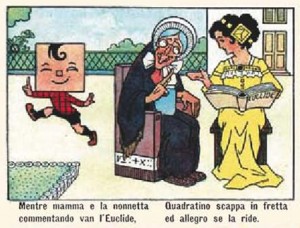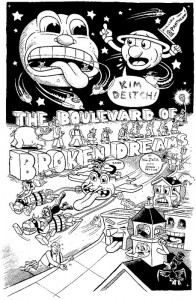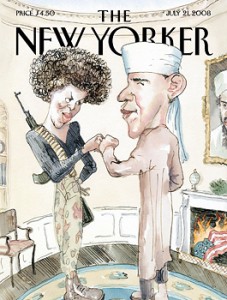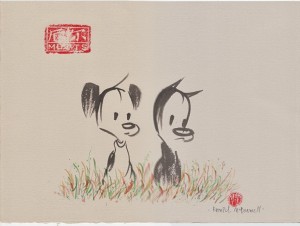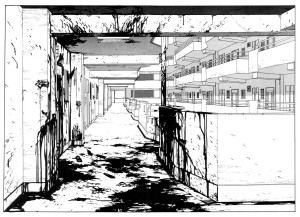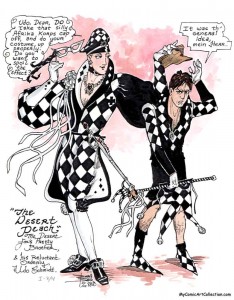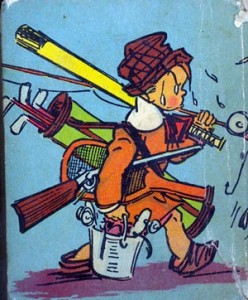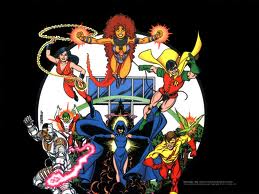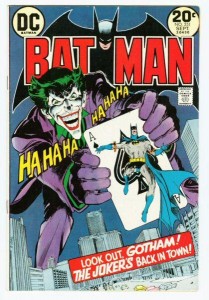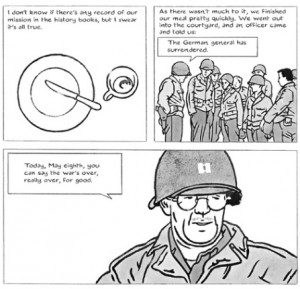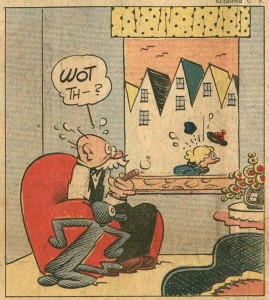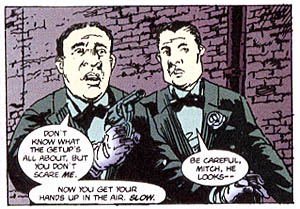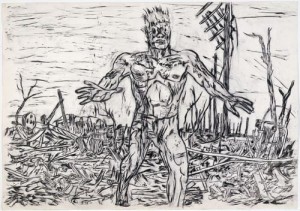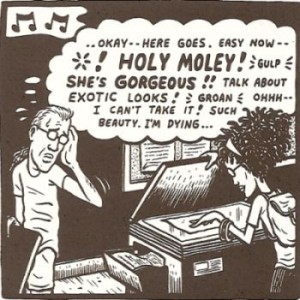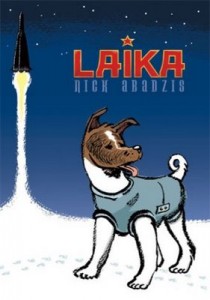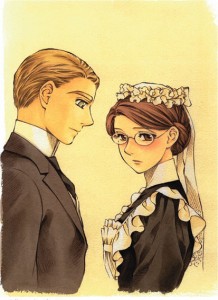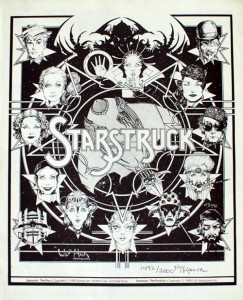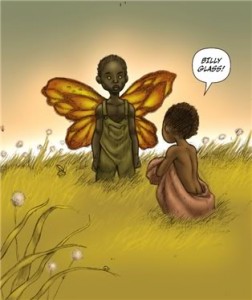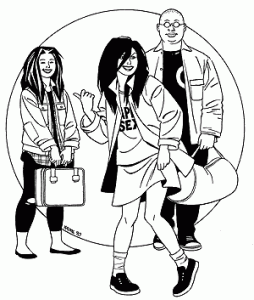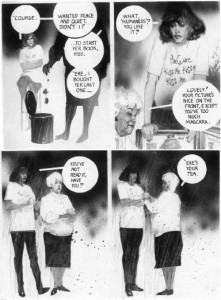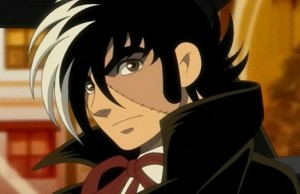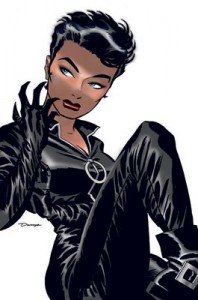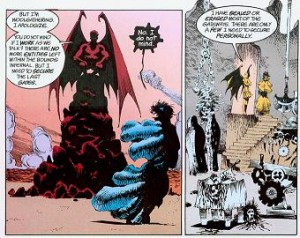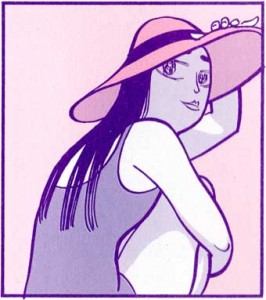The following lists were submitted in response to the question, “What are the ten comics works you consider your favorites, the best, or the most significant?” All lists have been edited for consistency, clarity, and to fix minor copy errors. Unranked lists are alphabetized by title. In instances where the vote varies somewhat with the Top 115 entry the vote was counted towards, an explanation of how the vote was counted appears below it.
In the case of divided votes, only works fitting the description that received multiple votes on their own received the benefit. For example, in Jessica Abel’s list, she voted for The Post-Superhero comics of David Mazzucchelli. That vote was divided evenly between Asterios Polyp and Paul Auster’s City of Glass because they fit that description and received multiple votes on their own. It was not in any way applied to the The Rubber Blanket Stories because that material did not receive multiple votes from other participants.
Ray Mescallado
Writer, Pleasure Principled; erstwhile columnist, The Comics Journal
![feiffer-toon]()
Feiffer, Jules Feiffer
- The Donald Duck and Uncle $crooge Stories, Carl Barks
- Dykes to Watch Out For, Alison Bechdel
- Feiffer, Jules Feiffer
- “Flies on the Ceiling,” Jaime Hernandez
Counted as a vote for The Locas Stories, Jaime Hernandez
- From Hell, Alan Moore & Eddie Campbell
- The Jughead Stories, Samm Schwartz
- 100 Bullets, Brian Azzarello & Eduardo Risso
- Partie de chasse [The Hunting Party], Pierre Christin & Enki Bilal
- “Short Story,” Roger Langridge & Andrew Langridge
- WRAB: Pirate Television, Matt Howarth
COMMENTS
My list hasn’t changed all that much from my TCJ Top 100 list many years ago. I’m not sure if that’s a good or bad thing.
______________________________________________
Jason Michelitch
Contributing Writer, Comics Alliance, The Hooded Utilitarian
![wells-verne-hark-a-vagrant-webcomic]()
Hark! A Vagrant, Kate Beaton
- The Alec Stories, Eddie Campbell
- Bone, Jeff Smith
- A Contract with God and Other Tenement Stories, Will Eisner
- The Fourth World Stories, Jack Kirby, with Mike Royer, et al.
- From Hell, Alan Moore & Eddie Campbell
- Hark! A Vagrant, Kate Beaton (the webcomics, not the to-be-published collection)
- Krazy Kat, George Herriman
- Love and Rockets, Gilbert Hernandez & Jaime Hernandez
Counted as a 0.5 vote each for The Locas Stories, Jaime Hernandez, and The Palomar Stories, Gilbert Hernandez
- Maus: A Survivor’s Tale, Art Spiegelman
- Spider-Man, Stan Lee & Steve Ditko
COMMENTS
ON PICKING TEN: You’re bastards, the lot of you. Ten comics? I could pick ten movies. I could pick ten albums. I could even pick ten people to kill, somewhere in the world, just by pressing a button in this here box, and in return I’ll receive ten million dollars and a subscription to The New Yorker, and I’ll magically be imbued with the ability to find the cartoons funny. I could do all that. But ten comics? You might as well ask me to pick ten fingers and cut off the rest.
I don’t know what it is about comics—that they’re such a strangely personal and direct form of popular narrative entertainment, that the medium has developed in the most scattershot and confounding ways, that there’s such a diverse array of expression that I find it maddening to try and compare an issue of Batman to a Calvin and Hobbes Sunday strip to Evan Dorkin’s “Merv Griffin” single-pager to Frank Santoro’s Incanto mini-comic to Kyle Baker’s Why I Hate Saturn. Maybe it’s because, of all the art forms I love, I understand comics the least (which only makes me love them more).
Whatever it is, picking ten comics has been awfully hard. I think I botched the job. I ended up with what looks like an awfully safe, middlebrow list. But what am I to do? It feels right. It’s the closest I can get the weird alchemical mixture of personal enjoyment, historical importance, and artistic significance (all filtered through my own subjective point of view, of course). I had to kill a lot of darlings. I really, really wanted to include at least one totally stupid pick, ideally the 1992 64-page DC self-mocking Ambush Bug Nothing Special by Giffen, Fleming, and Gordon, which is full of nothing but deliberately dumb jokes about ’90s comics. But I just couldn’t fit it in. I also would have really liked to have a more diverse list—more women, more creators of color, some European comics, some manga—but apparently I’m a sexist, racist, nationalist thug when it comes to taste in comics. Who knew? But I feel okay enough about my list. I can at least come up with a decent defense of each entry.
Krazy Kat—An ur-text for so much of what makes comics great. Simple iconography against lavish backdrops, slammed together over and over in deranged conflict, at once completely personal and effortlessly universal.
Amazing Spider-Man—The best super-hero character, a neurotic adolescent dumped unceremoniously into a science-fiction adulthood, in which he has to learn how to balance his family, his passions, his job, and his conscience. Sweaty, twisted, frustrated muscles and awkward, terrified, bugged-out eyes. It stayed good after Ditko left, but what it gained in Romita’s ability to draw pretty girls, it lost in Ditko’s pure feverish tension.
The Fourth World Saga—For a certain type of reader, and I confess I’m one of them, you can’t have comics without Kirby. And this is Kirby’s apex: His most successful, uninhibited exploration of his relationship to heroics, gods, myths, and war. One of the attendants at the sprawling, awkward birth of super-hero comics three decades previous, Kirby in 1970 delivers the ultimate expression of the original super-hero form. Historical artistic markers almost never line up perfectly with actual chronology, and Kirby is no exception, but The Fourth World is in many ways the last burst of original creation in a genre already dedicating itself to nostalgia, self-reference, and self-reverence. Stan Lee may have been a smoother crafter of dialogue, but Kirby reveals himself to be the better writer, in that his dedication is to exploring ideas and feelings, rather than cleverly re-packaging adventure tropes. The haphazard and unfinished production of the saga serves as much to its benefit as its detriment—Kirby’s concerns were not with conclusions or structure, but rather with firing off his idea-cannons with frenetic speed, and exorcising his deep passion and rage in crackling, frighteningly powerful lines. The best range of Kirby’s art is on display here—the first parts inked by Vince Colletta, who, though he unforgivably deletes portions of Kirby’s layouts, provides a smooth, humanizing touch to faces and a fine, feathery line reminiscent of antiquity to those drawings he deemed worthy of inking; the second parts inked by Mike Royer, providing what most would say is the rawest, most “pure” embellishment of Kirby’s pencils ever printed. Kirby is a seismic psychological event, and the ripples of his impact can be seen throughout the history and geography of comics. The Fourth World is the epicenter.
A Contract with God—I’m a sucker for ambition, and for shots fired across the bow. Will Eisner consciously forced Western comics to change the way they look at themselves. I’m also a sucker for the drowning sumptuousness of Will Eisner’s rain, one page of which alone would be worth a spot on this list.
Maus—Maybe the biggest target of cries of “overrated,” I keep returning to Maus. Its core creative choice, the central visual metaphor, is deceptively simple, often slandered as “easy,” but the effects it achieves are monumental—the cartoon animals are instantly empathetic, but the non-human anonymity drains the work of the melodrama that chokes most other holocaust-based narratives, and the self-referential “comic bookiness” creates a dialogue among the reader, the work, and the medium, as well as a self-interrogating dialogue between the artist and the qualities of realism, honesty, and iconography that permeate the book.
Love and Rockets—Hands down, the best modern American comic. Innovative, energetic, beautiful, influential, complex, human, funny, moving—all the adjectives you normally throw at stuff nowhere near as transcendent as the work of Los Bros.
Alec—A relentless thinker about the form trying just as consciously as Eisner to muscle comics into new territory, wielding sketchy, “unfinished” panels in a dense and super-functional 9-panel grid, mining the raw viscera of his own life for romantic, half-drunk, observational fiction. Comics’ own On the Road, except the rambling hero eventually matures, settles, and becomes more bemused than besotted. I don’t love anyone’s comics more than I love Eddie Campbell’s.
Bone—I don’t know where Bone currently stands with critics—not sure if this is a safe pick or an odd one. But is there anything more perfect than the first chapter of Jeff Smith’s all-ages fantasy adventure? From the first panel of the three Bones lost in the desert, the rhythm never misses a beat. The pinging dialogue, the falling layer of snow, and of course, the stupid, stupid rat creatures. Maybe this is a sentimental choice, but it’s also the very first book I thought to put on this list, and I never even considered taking it off.
From Hell—Coming at comics, as I do, from the background of your typical American comics fan, Alan Moore is tremendously important to me. I think that his talent holds up when looking from outside that particular community, but there’s no way for me to be sure. So I trudge on, wowed by his genius, of which From Hell is the most focused, sustained, and successful example. Eddie Campbell often wished he was working on Moore’s other great graphic novel at the time, Big Numbers (still and likely forever unfinished), but his sooty, ink-stained touch is so perfectly suited for the setting and subject matter, and his realistic, homely characters so necessarily defusing of titillating spectacle, that I can’t imagine anyone imagining the book existing any other way.
Hark! A Vagrant—One important aspect of comics is the varied and scattered ways in which different audiences interact with them. Mini-comics traded at convention booths, newspaper comics, spot illustrations in magazines, Jack Chick tracts left in bathrooms, webcomics posted to someone’s LiveJournal…comics to me are so often not discrete works of art to approach one at a time, but a sea of snippets and glances of pages and panels. A single daily dose of a great comic strip can be as deeply rewarding as a thousand-page graphic novel. A photocopied handmade mini-comic can run circles around a professionally printed, digitally colored commercial comic book. Comics are everywhere, comics are huge, but comics are still very small and personal when they need to be. They’re an incredibly direct delivery system of individual expression. This entry could have been any one of a number of different comics that I have primarily interacted with in short and infrequent doses through non-traditional means, but I chose the one I did because no one makes me laugh harder than Kate Beaton.
______________________________________________
Eden Miller
Writer, Comicsgirl, Ignatz Awards coordinator, Small Press Expo
![whyihatesaturn]()
Why I Hate Saturn, Kyle Baker
- American Born Chinese, Gene Luen Yang
- Bone, Jeff Smith
- Cages, Dave McKean
- Elfquest, Wendy Pini & Richard Pini
- Nana, Ai Yazawa
- Persepolis, Marjane Satrapi
- Skim, Mariko Tamaki & Jillian Tamaki
- The Tick, Ben Edlund
- Why I Hate Saturn, Kyle Baker
- Zot!, Scott McCloud
______________________________________________
Gary Spencer Millidge
Cartoonist, Strangehaven
![61BRKKYMNXL._SL500_AA300_]()
La Femme du magicien, Jerome Charyn & François Boucq
- Cages, Dave McKean
- Calvin and Hobbes, Bill Watterson
- Cerebus, Dave Sim & Gerhard
- The Fantastic Four, Stan Lee & Jack Kirby, with Joe Sinnott, et al.
- La Femme du magicien [The Magician’s Wife], Jerome Charyn & François Boucq
- From Hell, Alan Moore & Eddie Campbell
- Jimmy Corrigan: The Smartest Kid on Earth, Chris Ware
- Krazy Kat, George Herriman
- The Palomar Stories, Gilbert Hernandez
- The Spirit, Will Eisner
______________________________________________
Evan Minto
Editor-in-Chief, Ani-Gamers
![tezuka_buddha_01]()
Buddha, Osamu Tezuka
- Akira, Katsuhiro Otomo
- Black Jack, Osamu Tezuka
- Buddha, Osamu Tezuka
- Persepolis, Marjane Satrapi
- Pluto, Naoki Urasawa
- Solanin, Inio Asano
- One Piece, Eiichiro Oda
- Yûnagi no Machi, Sakura no Kuni [Town of Evening Calm, Country of Cherry Blossoms], Fumiyo Kouno
______________________________________________
Wolfen Moondaughter
Contributing writer, Sequential Tart
![20110101_681222574877]()
Paradise Kiss, Ai Yazawa
- Courtney Crumrin, Ted Naifeh
- Deadpool, Joe Kelly & Ed McGuinness
- Elfquest, Wendy Pini and Richard Pini
- Journey Into Mystery, Kieren Gillen, Doug Braithwaite, and Ulises Arreola
- Mars, Fuyumi Soryo
- Paradise Kiss, Ai Yazawa
- Ranma ½, Rumiko Takahashi
- Real, Takehiko Inoue
- The X-Men Stories, Chris Claremont & Jim Lee
- The X-Men Stories, Scott Lobdell & Joe Madureira
______________________________________________
Pat Moriarity
Cartoonist, Big Mouth
![woodring-frank-painting]()
Frank, Jim Woodring
- American Splendor, Harvey Pekar, et al.
- The Book of Genesis Illustrated, R. Crumb
- Calvin and Hobbes, Bill Watterson
- The Caricatures, Basil Wolverton
- The EC Comics Stories, Wallace Wood
Counted as a 0.333 vote each for The EC Comics Science-Fiction Stories, Al Feldstein & Wallace Wood, Al Williamson, Joe Orlando, et al., The EC Comics War Stories, Harvey Kurtzman & John Severin, Wallace Wood, Jack Davis, et al., and MAD #1-28, Harvey Kurtzman & Will Elder, Wallace Wood, Jack Davis, et al.
- The Editorial Cartoons, Edward Sorel
- The Far Side, Gary Larson
- The Frank Stories, Jim Woodring
- Hate!, Peter Bagge
Counted as a vote for The Bradleys and the Buddy Bradley Stories
- Trots and Bonnie, Shary Flenniken
______________________________________________
Pedro Moura
Writer, Ler BD
![baudoin-edmond-1942-france-le-portrait-2565109]()
Le Portrait, Edmond Baudoin
- The Alec Stories, Eddie Campbell
- O diário de K. [The Diary of K.], Filipe Abranches
- Fun Home, Alison Bechdel
- La Guerre d’ Alan [Alan’s War], Emmanuel Guibert
- “Here,”, Richard McGuire
- L’histoire de M. Vieux-Bois [The Adventures of Obadiah Oldbuck], Rodolphe Töpffer
Counted as a vote for Works, Rodolphe Töpffer
- Krazy Kat, George Herriman
- Mort Cinder, Héctor Germán Oesterheld & Alberto Breccia
- Mûno no Hito [The Talentless Man], Yoshiharu Tsuge
- Le Portrait, Edmond Baudoin
______________________________________________
Todd Munson
Associate Professor of Asian Studies, Randolph-Macon College
![pe20_american_splendor]()
American Splendor, Harvey Pekar, et al.
- American Splendor, Harvey Pekar, with R. Crumb, et al.
- Astro City, Kurt Busiek & Brent Anderson, with Alex Ross, et al.
- Doonesbury, Garry B. Trudeau
- Fables, Bill Willingham & Mark Buckingham, et al.
- Hi no Tori [Phoenix], Osamu Tezuka
- Jimmy Corrigan: The Smartest Kid on Earth, Chris Ware
- The Little Lulu Stories, John Stanley, with Irving Tripp
- Peanuts, Charles M. Schulz
- The Uncle $crooge Stories, Carl Barks
- Watchmen, Alan Moore & Dave Gibbons
______________________________________________
Rachel Nabors
Cartoonist, Rachel the Great
![Usagi_Manga]()
Sailor Moon, Naoko Takeuchi
- Bishôjo Senshi Sêrâ Mûn [Sailor Moon], Naoko Takeuchi
- Bizenghast, M. Alice LeGrow
- Bleach, Tite Kubo
- The Boondocks, Aaron McGruder
- The Catwoman Stories, all creative personnel
- Gen 13, J. Scott Campbell, et al.
- Rachel the Great, Rachel Nabors
- Sky Doll, Alessandro Barbucci & Barbara Canepa
- W.I.T.C.H., Elisabetta Gonne & Alessandro Barbucci
COMMENTS
Sky Doll, Barbucci.
W.I.T.C.H, also Barbucci, but through Disney. This series showed that you can successfully sell graphic novels to girls. They are quite popular in Europe and all over the world. Why? Because Disney knows how to sell to this demographic, preteens without credit cards but with $5 allowances.
Rachel the Great, because I made it and I still get heartwarming “your comics changed my life” emails.
Bizengast, by M. Alice LeGrow, because I enjoyed reading it.
Bleach, by Tite Kubo, because he’s so damn good at drawing hot guys. Rawr. If only there were more Ulquiorra!
Gen 13, the parts done by J. Scott Campbell. The series went meh when he moved on, but it was my favorite comic as a pre-teen. My favorite character was Fairchild, the Amazonian redhead with smarts. (I wonder why?)
Catwoman, any incarnation. She’s just rawr no matter how you look at her or who is drawing her. She’s an anti-hero, and I loved every minute of her escapades growing up.
Sailor Moon, by Naoko Takeuchi introduced myself and a whole generation of girls to the idea that women could be heroines and that there were comics out there, in Japan, where women were as prolific authors and artists as men. Changed the face of comics.
The Boondocks.
______________________________________________
Mark Newgarden
Cartoonist, We All Die Alone; co-creator, Garbage Pail Kids
![c406225b9da0be68eb28f010l]()
Hey, Look!, Harvey Kurtzman
Dauntless Durham of the U.S.A., Harry Hershfeld
Dick Tracy, Chester Gould
Dreams of the Rarebit Fiend, Winsor McCay
He Done Her Wrong, Milt Gross
Hey, Look!, Harvey Kurtzman
Krazy Kat, George Herriman
The Little Man with the Eyes, Crockett Johnson
Nancy, Ernie Bushmiller
Peanuts, Charles M. Schulz
Thimble Theatre, starring Popeye, E. C. Segar
______________________________________________
Eugenio Nittolo
Writer, La Carotte
![asterix]()
Astérix the Gaul, René Goscinny & Albert Uderzo
- Astérix le gaulois [Astérix the Gaul], René Goscinny & Albert Uderzo
- Calvin and Hobbes, Bill Watterson
- Corto Maltese, Hugo Pratt
- Maus: A Survivor’s Tale, Art Spiegelman
- Persepolis, Marjane Satrapi
- La Peur du rouge [The Red Scare], Fred Neidhardt
- Pogo, Walt Kelly
- Polly and Her Pals, Cliff Sterrett
- Shenzhen: A Travelogue from China, Guy Delisle
- Works, Ralf König
COMMENTS
Your idea—it’s very funny.
For Ralf König, I don’t know the English edition but I very much love Wie die Karnickel [Like Rabbits].
______________________________________________
Rick Norwood
Editor, Comics Revue
![images]()
V for Vendetta, Alan Moore & David Lloyd
- 1. Prince Valiant, Hal Foster
- 2. The Donald Duck Stories, Carl Barks
- 3. The Uncle $crooge Stories, Don Rosa
- 4. Pogo, Walt Kelly
- 5. The Tarzan Newspaper Strips, Russ Manning
- 6. The Sandman, Neil Gaiman, et al.
- 7. The Cartoon History of the Universe, Larry Gonick
- 8. Calvin and Hobbes, Bill Watterson
- 9. Casey Ruggles, Warren Tufts
- 10. V for Vendetta, Alan Moore & David Lloyd
COMMENTS
It is hard, really hard, to limit my list to 10.
How are you going to count the votes? For example, suppose you have one vote for Watchmen and one vote for “comic books written by Alan Moore.” If you combine them, you give prolific creators an advantage. If you don’t, then prolific creators have an extreme disadvantage, because their vote is split among so many different titles. It might be best to list the ten best comic creators of all time instead of the top ten comics.
Another way to go would be this. Combine the votes of each creator to get a list of the top 100 creators, then next to each creator list just the title that got the most votes, and have a second round of voting.
______________________________________________
José-Luis Olivares
Cartoonist, End of Eros, The Cannibal
![tumblr_lkpbzaIASS1qiv08do1_400]()
Uzumaki, Junji Ito
- Buddha, Osamu Tezuka
- Calvin and Hobbes, Bill Watterson
- The Far Side, Gary Larson
- Gasoline Alley, Frank King
- Goodbye, Chunky Rice, Craig Thompson
- Hicksville, Dylan Horrocks
- It’s a Good Life, If You Don’t Weaken, Seth
- Skibber Bee Bye and Other Works, Ron Regé, Jr.
- Uzumaki, Junji Ito
- Works, Frans Masereel
______________________________________________
Tim O’Neil
Writer, The Hurting; contributing writer, PopMatters, The Comics Journal
![Louis-762983]()
Louis Riel, Chester Brown
- Binky Brown Meets the Holy Virgin Mary, Justin Green
- Cerebus, Dave Sim & Gerhard
- The Donald Duck Stories, Carl Barks
- The Fantastic Four, Stan Lee & Jack Kirby, with Joe Sinnott, et al.
- Louis Riel, Chester Brown
- Love and Rockets, Gilbert Hernandez & Jaime Hernandez
Counted as a 0.5 vote each for The Locas Stories, Jaime Hernandez, and The Palomar Stories, Gilbert Hernandez
- Maggots, Brian Chippendale
- Terry and the Pirates, Milton Caniff
- Thimble Theatre, starring Popeye, E. C. Segar
- The Weirdo Stories, R. Crumb
______________________________________________
Jim Ottaviani
Scriptwriter, Feynman, T-Minus: Race to the Moon
![27858]()
Spider-Man, Stan Lee & Steve Ditko
- American Flagg!, Howard Chaykin
- Calvin and Hobbes, Bill Watterson
- Doonesbury, Garry B. Trudeau
- It’s a Good Life, If You Don’t Weaken, Seth
- Maus: A Survivor’s Tale, Art Spiegelman
- Peanuts, Charles M. Schulz
- Prince Valiant, Hal Foster
- Spider-Man, Stan Lee & Steve Ditko
- Terry and the Pirates, Milton Caniff
- Watchmen, Alan Moore & Dave Gibbons
______________________________________________
Jason Overby
Cartoonist, Jessica, Exploding Head Man
![superm71]()
Supermonster #7, Kevin Huizenga
- The American Splendor Stories, Harvey Pekar & R. Crumb
- David Boring, Daniel Clowes
- The Disgusting Room, Austin English
- “Helder” and “Showing Helder”, Chester Brown
- I Never Liked You, Chester Brown
- Jimbo in Paradise, Gary Panter
- King-Cat Comics and Stories, John Porcellino
- The Krazy Kat Sunday Color Strips, George Herriman
- “Sneaking Out”, Lynda Barry
Counted as a vote for Ernie Pook’s Comeek and The RAW Stories, Lynda Barry
- Supermonster #7, Kevin Huizenga
COMMENTS
[About Supermonster #7] This was such a big one for me. It hit me pretty strongly at a time when I was really disillusioned with comics (what else is new). It was probably my introduction to mini-comics, crummy on the surface but secretly amazing. It’s a perfect Zen monologue where a guy is just walking around his neighborhood, taking in the random bits of data with all his senses. I bought the original art for the first page from Kevin years ago, and it’s the only piece of original art I own.
______________________________________________
Joshua Paddison
Assistant Professor of American Studies, Indiana University
![2074541]()
L’Ascension du haut-mal [Epileptic], David B.
- L’Ascension du haut-mal [Epileptic], David B.
- Binky Brown Meets the Holy Virgin Mary, Justin Green
- A Child’s Life and Other Stories, Phoebe Gloeckner
- I Never Liked You, Chester Brown
- Jimmy Corrigan: The Smartest Kid on Earth, Chris Ware
- Little Nemo in Slumberland, Winsor McCay
- Maus: A Survivor’s Tale, Art Spiegelman
- Nancy, Ernie Bushmiller
- Peanuts, Charles M. Schulz
- The Sketchbooks, R. Crumb
______________________________________________
Nick Patten
Cartoonist, Unreachable Beasts
![hb1600_1200.jpg_1]()
Hellboy, Mike Mignola
- Black Jack, Osamu Tezuka
- Le Combat ordinaire [Ordinary Victories], Manu Larcenet
- Ed the Happy Clown, Chester Brown
- Fatal Faux-Pas, Samuel C. Gaskin
- Hellboy, Mike Mignola
- Isaac le pirate [Isaac the Pirate], Christophe Blain
- Moomin, Tove Jansson
- The Mourning Star, Kazimir Strzepek
- Poor Sailor, Sammy Harkham
- Tiempos Finales [End Times], Samuel Hiti
______________________________________________
Marco Pellitteri
Author, The Dragon and the Dazzle; contributing writer, The Comics Journal
![Germ_n_Oesterheld_Solano_L_pez_El_eternauta_Parte_1_1957_01]()
El Eternauta, Héctor Germán Oesterheld & Francisco Solano López
- Batman: The Dark Knight Returns, Frank Miller, with Klaus Janson & Lynn Varley
- Buddha, Osamu Tezuka
- Corto Maltese, Hugo Pratt
- El Eternauta, Héctor Germán Oesterheld & Francisco Solano López
- Fuochi [Fires], Lorenzo Mattotti
- Hadashi no Gen [Barefoot Gen], Keiji Nakazawa
- L’Incal, Alexandro Jodorowsky & Jean “Moebius” Giraud
- Little Nemo in Slumberland, Winsor McCay
- Maus: A Survivor’s Tale, Art Spiegelman
- Watchmen, Alan Moore & Dave Gibbons
COMMENTS
Here are my titles. I focused on general works (series, etc.) or specific books, not specific story arcs or particular stories of long series. I have followed these criteria: 1) content relevance; 2) aesthetic relevance; 3) linguistic relevance; 4) historical relevance; 5) popularity relevance; 6) geographical distribution—and tried to ponder over in my mind.
______________________________________________
Michael Pemberton
Professor of Writing and Linguistics, Georgia Southern University
![ff1]()
The Fantastic Four, Stan Lee & Jack Kirby
- 1. The Fantastic Four, Stan Lee & Jack Kirby, with Joe Sinnott, et al.
- 2. Watchmen, Alan Moore & Dave Gibbons
- 3. The Spirit, Will Eisner
- 4. The Uncle $crooge Stories, Carl Barks
- 5. Doonesbury, Garry B. Trudeau
- 6. Batman: The Dark Knight Returns, Frank Miller, with Klaus Janson & Lynn Varley
- 7. Astérix le gaulois [Astérix the Gaul], René Goscinny & Albert Uderzo
- 8. Peanuts, Charles M. Schulz
- 9. Calvin and Hobbes, Bill Watterson
- 10. Understanding Comics, Scott McCloud
COMMENTS
Thanks for the opportunity to participate in your survey (I think). You have caused me to do some teeth-gnashing, hair-pulling, and head-banging in trying to limit my selections to a mere 10. I’ve managed to narrow down my list by deciding to include comics work that I felt was (a) brilliantly written, (b) skillfully drawn, and (c) either culturally significant or that had a dramatic impact on the comics field.
______________________________________________
Kai Pfeiffer
Instructor, Kassel Art Academy; cartoonist, Realm; editor, Plaque
![224543]()
From Hell, Alan Moore & Eddie Campbell
- L’Ascension du haut-mal [Epileptic], David B.
- Le Bar à Joe [Joe’s Bar], José Muñoz & Carlos Sampayo
- Bleu transparent [Clear Blue], Oji Suzuki
- Chance in Hell, Gilbert Hernandez
- Faire semblant, c’est mentir [Pretending Is Lying], Dominique Goblet
- From Hell, Alan Moore & Eddie Campbell
- Le Garage hermétique [The Airtight Garage], Jean “Moebius” Giraud
- Jimbo, Gary Panter
- Lettres au maire de V. [Letters to the Mayor of V.], Alex Barbier
- Valentina, Guido Crepax
COMMENTS
This “canon” is an almost arbitrary choice from a much larger list of books that hit me just as hard (Krazy Kat, Jimmy Corrigan, Black Hole, The Fate of the Artist, Ici même [You Are There], Le Royaume [The Kingdom], Georges et Louis Romanciers [George and Louis, Novelists], Yume no q-saku…)
Greetings from Berlin—love your blog, expressly for the highly opinionated content.
______________________________________________
Stephanie Piro
Cartoonist, Fair Game, Six Chix
![images-1]()
Brenda Starr, Dale Messick
- 1. Peanuts, Charles M. Schulz
- 2. Works, Edward Gorey (not really comics, but were very influential on me, anyway)
- 3. The St. Trinian’s Cartoons, Ronald Searle
- 4. The Betty and Veronica Stories, Dan DeCarlo, et al. (1950s and ‘60s)
- 5. Moon Mullins, Ferd Johnson
- 6. Pogo, Walt Kelly
- 7. Chickens Don’t Have Chairs, Copi
- 8. Superman of the 1950s/’60s (I believe Wayne Boring and Curt Swan were the artists during this time period)
Counted as a vote for The Superman Stories, Mort Weisinger & Curt Swan, Wayne Boring, et al.
- 9. Brenda Starr, Dale Messick
- 10. The Moomintroll Books and Comics, Tove Jansson
Counted as a vote for Moomin, Tove Jansson
COMMENTS
I also used to love Rivets by George Sixta, and Dondi by Irwin Hasen in the papers as a kid. Just putting in a plug for two sort-of-forgotten strips.
______________________________________________
John Porcellino
Cartoonist, King-Cat Comics and Stories, Perfect Example
![OMAC_Kirby_lift_h]()
OMAC, Jack Kirby, with Mike Royer
- 1. Eightball #22 [Ice Haven], Daniel Clowes
- 2. Gasoline Alley, Frank King
- 3. Strange Growths, Jenny Zervakis
- 4. Krazy Kat, George Herriman
- 5. OMAC: One Man Army Corps, Jack Kirby, with Mike Royer
- 6. Ernie Pook’s Comeek, Lynda Barry
- 7. The Monster Stories, Stan Lee & Jack Kirby
- 8. Dirty Plotte, Julie Doucet
- 9. Caricature: Nine Stories, Daniel Clowes
- 10. Extraits naturels de carnets [Natural Extracts of Books], Laurent Lolmède
__________
Best Comics Poll Lists
Best Comics Poll Index

























































































